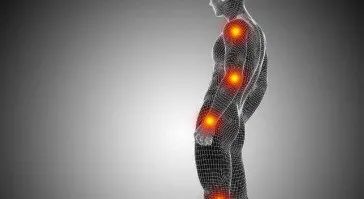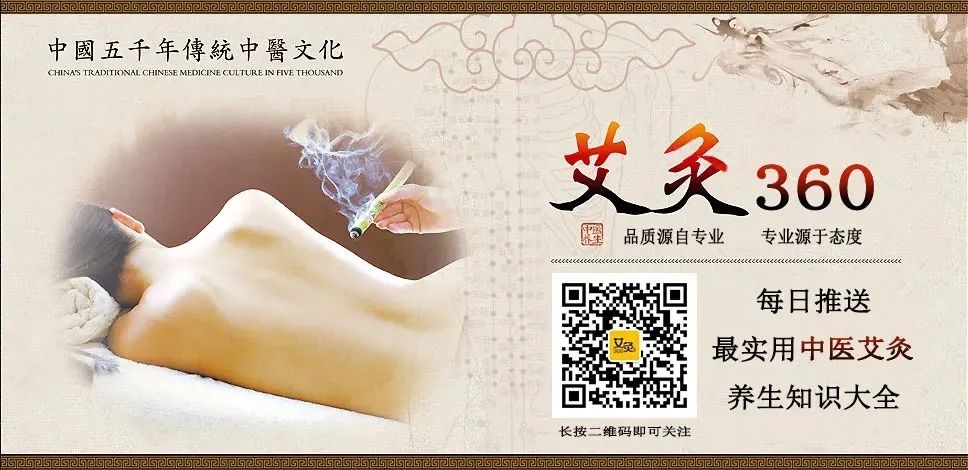△Click to follow us
The pandemic has brought Traditional Chinese Medicine (TCM) back into the public eye, leading many newcomers to start exploring moxibustion. During this time, quite a few beginners have embarked on their moxibustion journey.
However, novice practitioners often encounter issues, especially those with poor constitution or existing ailments, who may experience a “worsening” of their condition after moxibustion.
What they do not realize is that some symptoms that seem like a “worsening” of their condition after moxibustion are actually signs of improvement in their health…
“Ecology” refers to the organic connection between living organisms and their environment. Ecological ethics is the moral perspective, basic norms, and ethical practices regarding the relationship between life and the ecological environment. Since the 20th century, with the widespread recognition of environmental crises, ecological awareness has burst out of professional circles and into the public arena, tasked with influencing human environmental practices and maintaining global ecological balance, becoming a prominent global discourse. Daoism is not ecology, but its ecological ethical spirit is irreplaceable due to its unique characteristics; otherwise, it would not have declined and then revived, continuing to influence deeply to this day. In terms of ethical understanding, Daoism emphasizes the joy of life, tranquility, simplicity, and the enrichment and expansion of the spirit, focusing on the harmony between self and nature, human-centeredness, and possessing profound yet simple content that is infinitely interesting; in terms of ethical practice, Daoism is dedicated to cultivating the essence of life, nurturing obscurity, and seeking a life that persists in the interaction of emotions, actions, nature, human relationships, and culture. Therefore, it demonstrates a conscious dynamism in developing life vitality, a unity with natural objects, and a holistic system of ethical understanding. In Daoist terms, this is expressed as “the way of nature cannot be violated” and “following the way of nature.” This nature refers to the essence of things, the nature of life, and the nature of society. Understanding the essence of things, life, and society, and seeking the style, attitude, and demeanor that life and nature should have is the goal and spiritual pillar of Daoist ethics.The ecological ethical spirit of Daoism is reflected in its exquisite and profound content and the appeal it holds for the world, embedded in the vitality that allows it to endure and develop over time. Specifically, the ecological ethical spirit of Daoism is manifested in six aspects: First is the spirit of unity of all things. The highest object of worship in Daoism is the “Dao.” The purpose of Daoism is to achieve immortality and become an immortal. To achieve the Dao means to integrate with the Great Dao through cultivation; thus, Daoism is the religion that emphasizes real life the most among many religions in China. It views all things in the world as one, believing that the existence of all things in nature has its rationality, and humans are part of the universe, should enjoy life, and value life over death, allowing life to continuously transcend. Humanity should also respect the existence and individuality of all things with a sense of equality. The early Daoist classic “Taiping Jing” states: “Heaven and earth are in harmony, sharing the same heart, coexisting with all things,” suggesting that the ideal peaceful world is one where humans and all levels of natural things coexist harmoniously and prosper together. In the thoughts of Daoist thinker Ge Hong, the awareness of equality in the unity of all things is also very clear and rich; he believes that through cultivation, humans can achieve the ideal of “longevity” and “immortalization of the physical body,” which is the realm of unity with nature or the unity of all things. Daoism also has the thought of “the unity of the way of life, valuing life,” as Laozi pointed out, the Dao is the origin of the universe, the Dao gives birth to one, one gives birth to two, two gives birth to three, and three gives birth to all things. Zhuangzi said: “Heaven and earth are born with me, and all things are one with me.” This indicates that Daoism emphasizes understanding and grasping human will from the height of the universe. The ecological ethical spirit of the unity of all things tells people to live in harmony with nature and create a society of harmonious coexistence.Second is the spirit of non-ownership. Related to the spirit of unity of all things, Daoism believes that the highest realm and standard of life is the morality of producing all things without possessing them. Daoism holds that the highest realm of physical cultivation and spiritual perfection is the “Dao.” How is the Dao produced? Ge Hong proposed: “The Dao arises from one, its value is unique, each resides in one place, symbolizing heaven, earth, and humanity, hence it is called the three unities.” Heaven obtains one to be clear, earth obtains one to be peaceful, humanity obtains one to live, and spirit obtains one to be spiritual. Furthermore, he considers this to be an elaboration of Laozi’s wisdom of the Great Dao. Laozi pointed out, “Man follows the earth, the earth follows heaven, heaven follows the Dao, and the Dao follows nature,” and the essence of nature is: “The Dao is revered, virtue is precious, and nothing commands it but is always natural. Thus, the Dao gives birth, virtue nurtures, grows, and protects, giving life without ownership, acting without reliance, and nurturing without dominating; this is called profound virtue.” Therefore, only “the Dao follows nature” aligns with moral thought. Noble morality lies in generating all things without claiming them for oneself, assisting all things without boasting of one’s contributions, and guiding all things without dominating them. The Tang dynasty Daoist scholar and physician Sun Simiao practiced this spirit, basing his medical theory on the unity of heaven and humanity and the non-ownership principle, stating: “Heaven has four seasons and five elements, humanity has four limbs and five organs, yang uses its form, yin uses its essence, which is common to heaven and humanity. A good doctor guides with medicine and stones, saves with needles and agents, while a sage harmonizes with supreme virtue, assisting with human affairs; thus, the body has curable diseases, and heaven and earth have disasters that can be eliminated.” Sun Simiao himself “exhausted various arts, discussing the true one,” not only excelling in medical skills but also possessing noble character. The Daoist spirit of non-ownership has considerable practicality and universal significance, proposing the concept of sustainable balanced development of worldly matters, revealing that humanity must comply with nature and emulate natural laws, doing what is necessary and refraining from what is unnecessary to achieve results; if one forcibly takes, it will backfire, disrupt harmony, and fail to reach a high realm.Third is the spirit of shaping all things. Before Daoism, the “Zhou Yi Chuan” stated: “The great person aligns their virtue with heaven and earth, their brightness with the sun and moon, and their order with the four seasons.” Here it points out that the heavenly way and the earthly way are opposing yet coordinated, and this coordination is mediated by humanity. Laozi elevates humanity to an important position: “Thus, the Dao is great, heaven is great, earth is great, and humanity is also great. Among the four greats, humanity occupies one.” Since “humanity is also great,” humans are not merely dependent on nature, subject to it, but should master the laws of nature. Because humanity relies on nature for survival, they must engage in material exchange with nature. Daoism further proposes that humans should think thrice before acting, assess the situation, seek immortality and the Dao without forcing actions; if one acts contrary to the Dao and “acts recklessly,” it will inevitably corrupt one’s nature and even harm humanity itself. Daoist practitioners believe that humanity and the universe are mutually responsive, with the basis of this response being that both humans and all things possess spirituality, and there is communication between humans and objects. The universe evolves continuously, and as a member of the cosmic community, humanity should aim to promote greater harmony and perfection in the universe, rather than engage in destructive behaviors that stifle the vitality of the universe. Therefore, Daoism not only provides a belief system for individuals to find their place in life or to focus on the perfection and adherence to doctrines and regulations, seeking solemnity and sincerity in rituals and prayers, but also concretizes beliefs or doctrines into various Daoist practices and techniques, forming an operational system that guides followers to practice. It can be said that Daoism is a religion that values the Dao, techniques, and actions, emphasizing both the elevation of the Dao and actively advocating for practices and cultivation techniques. A true Daoist comprehensively grasps the essence of Daoism, not only understanding its fundamental purpose or possessing sincere faith but also undergoing training in Daoist techniques, striving to accumulate Daoist merit, advancing without bounds, and continuously deepening and purifying their faith. This fully emphasizes the proactive agency of human activities and the adaptability of humanity to nature. As intermediaries and coordinators between heaven and earth, humans must both comply with nature and guide natural changes to shape all things.Fourth is the spirit of unity in diversity. The spirit of unity in diversity in Daoism is inherited from the spirit of “harmony and unity” in traditional ethics. The Daoist “Taiping Jing” states: “Harmony is the master of all things,” believing that all levels of things in the natural world and human society contain three basic elements: yin, yang, and harmony, which together constitute one entity, hence the name three names with one heart. “The vital energy has three names: the sun, the moon, and harmony. The body has three names: heaven, earth, and humanity. Heaven has three names: sun, moon, and stars, with the North Pole as the center. The earth has three names: mountains, rivers, and flat land. Humanity has three names: father, mother, and child. Governance has three names: ruler, minister, and people.” The three names with one heart represent the ideal peaceful world. The way of yin and yang reflects heavenly will, so humanity must comply with the principles of yin and yang, maintaining harmony in relationships between people and between humanity and nature from all aspects to eliminate disasters and strive for world peace. To achieve this goal, Daoism has developed the idea of harmony in its belief system, alchemical techniques, and ritual norms. The ecological wisdom of unity in diversity helps people recognize the significance of the diversity of all things in the world. Protecting the diversity of things can lead to sustainable development.Fifth is the spirit of cyclical regeneration. In terms of how to effectively utilize nature, traditional Chinese people have established the goals of “greatness” and “longevity,” believing that to achieve these goals, one must possess upright virtue, emulate heaven and earth, and use systems to restrain humanity’s insatiable desires, preventing harm to nature and humanity. The “Zhou Yi” points out two paths: the first is “Nine Two, steadfast and auspicious, as it is centered.” The second is “Centering leads to communication. Heaven and earth are regulated, and the four seasons are established; regulation restrains the world, without harming wealth or harming the people.” Daoism has also developed similar thoughts, emphasizing that the recognition of life and the conditions for its existence is the wisdom and virtue of sages, and the ideal living world for humanity is a beautiful society where humanity and nature are one, believing that in such a society, life can circulate continuously, flowing without interruption, and thriving endlessly. Early Daoism believed that those who achieved immortality in ancient times either grew wings and flew, standing out from the nature of ordinary people, or transformed into different forms, like a sparrow transforming into a clam, or a pheasant transforming into a giant clam. Later Daoism absorbed more thoughts from daily human relationships, approaching from the perspective of life’s cyclical regeneration, taking “aging without decline, extending life, and moving freely” as the path of immortals. The Daoist scholar Tan Qiao from the Five Dynasties viewed the universe, life, and society through the lens of “transformation,” proposing: “The void transforms the spirit, the spirit transforms the qi, the qi transforms the form, the form transforms the essence, the essence transforms the gaze, and the gaze transforms into yielding and yielding…” The prosperity of life and society is in a process of changing unity. Daoism advocates that humanity should greatly restrain desires, maintaining the vitality and development of all things, which aligns with traditional Chinese thoughts of harvesting timber in the mountains according to the seasons, prohibiting logging before summer, prohibiting the capture of young animals and birds, and not overfishing or burning forests. Humanity must engage in material exchange with biological resources. Engaging in material exchange is not about forcible possession but about adapting and adjusting to nature.Sixth is the spirit of interconnectedness of all things. Daoist thought has always viewed nature as a super-large system full of life, where all things are organically connected. The universe operates in its course, intersecting time and space coordinates. From the beginning of Laozi and Zhuangzi, the mysteries have been explored to reveal the inherent relationships in nature. Laozi said: “The Great Dao is vast and inclusive, it can be left or right. All things hold it and give life without claiming, achieving success without naming. It nourishes all things without being the master, always without desire to be named small. All things return to it without being the master, it can be called great. Because it never claims to be great, it can achieve greatness.” This means that the Great Dao, like vast waters, nourishes all things without selfishness or bias, like a great mother caring for all life, all life relies on the Dao for nourishment. We must treat the natural world kindly because fundamentally, “humanity is one with heaven.” Therefore, it is essential to protect the ecological environment. Zhuangzi said: “All things are seeds, differing in form and appearance, beginning and ending like a ring, with no distinction of order; this is called heavenly equality. Heavenly equality means the balance of heaven.” This means that all things come from specific species, but there are also connections and transformations between different material species, like a circular ring, indistinguishable in beginning and end. This natural connectivity can be called “heavenly equality.” Daoism believes that the Dao is the origin of the world, the total source of all life, and the total driving force of the generation of all things. The Tang dynasty Daoist Wu Jun said: “The way that gives life is called the Dao, the Dao is inherently nameless. The nurturing and forming of it is called virtue, virtue is inherently unlabelled. If we try to discuss it, heaven, earth, humanity, spirits, immortals, and deities cannot exist without the Dao, and cannot be completed without virtue. The living do not know their beginning, and the completed do not know their end. Exploring the profound and seeking the hidden, no one can glimpse its origin, entering the end of existence and exiting the beginning of non-existence, no one can investigate its signs, this is called nature. Nature is the constant of virtue, the framework of heaven and earth.” This is based on the inherent principles of the material world, reasoning the significance of the moral essence for the material world, which contains ecological ethical wisdom of mutual growth and order of things. The Great Dao is the origin of the universe and the starting point for observing heaven and earth; from the perspective of the Great Dao, humanity and nature are one, all things are together, and there is no distinction between objects and self; although heaven and earth have different forms and human affairs have their own principles, fundamentally, each follows its nature, each fulfills its essence, and each is natural and at peace. This is the unity in diversity, the non-difference in difference; realizing the unity in diversity and the non-difference in difference is to comprehend the Great Dao and to merge into the Great Dao.In summary, the aforementioned aspects, when implemented in reality to maintain biological species and beautify the living environment, can contribute to maintaining ecological balance and achieving sustainable development. This means that the ecological ethics of Daoism must and can undergo modern transformation. The opportunity for transformation lies in the cultivation of a modern personality with a noble spiritual realm. Because according to Daoist views, the lofty realm achieved through cultivation is not mysterious or unreachable; the highest immortals are manifestations of human creation and practice in the world. The expert in the history of Chinese religions, Mr. Mu Zhongjian, summarized the characteristics of the Daoist immortal personality in several aspects: first, a deep and vigorous vitality, thus able to live healthily and long; second, a high spiritual realm, transcending the “small self” to achieve the “great self,” thus the spirit can be immortal; third, extraordinary wisdom, possessing high insight and foresight, yet great wisdom appears foolish, blending with the dust; fourth, benefiting without harming, acting without contention, and achieving merit in the world; fifth, being carefree and at ease, open-minded and composed, adept at resolving troubles, and always maintaining a joyful heart. Achieving these aspects allows one to be called a living immortal. The so-called immortal realm, besides being happy and joyful people, is also a beautiful and pleasant environment. Blue skies and white clouds, green mountains and clear waters, birds singing and flowers fragrant, with people living peacefully and happily together, this is the beautiful life akin to a paradise on earth.We believe that as long as people strive to build and integrate the Daoist ethical spirit of the unity of all things, non-ownership, shaping all things, unity in diversity, cyclical regeneration, and interconnectedness of all things into the cultivation of modern personality, it can advance our material and cultural construction, and the paradise on earth can appear before our eyes.1. Drowsiness and Fatigue After Moxibustion Some people always feel lethargic and lack energy, so they want to use moxibustion for adjustment. However, after a few sessions of moxibustion, they find themselves feeling even more fatigued and drowsy, thinking that moxibustion is ineffective.In fact, this is a positive sign of the body’s recovery, as moxibustion helps to restore yang and return to the source.Traditional Chinese Medicine (TCM) believes that a healthy body is characterized by “yin being balanced and yang being dense,” where all bodily functions coordinate with each other, maintaining a balance of yin and yang.When the body’s qi and blood are insufficient, and yang qi is deficient, the yang qi within the body will rise, which is known as floating yang, causing weakness and lack of strength.After moxibustion at specific acupuncture points, through beneficial stimulation of the meridians and acupoints, the fire can be directed downward, bringing the floating yang back to where it should be.During this process, the body needs rest to self-adjust for a quicker recovery, so it is possible to feel more drowsy and fatigued in the short term. In such cases, just follow your feelings; eat when hungry and sleep when tired.2. Pain in Meridians and Joints After Moxibustion
Some people always feel lethargic and lack energy, so they want to use moxibustion for adjustment. However, after a few sessions of moxibustion, they find themselves feeling even more fatigued and drowsy, thinking that moxibustion is ineffective.In fact, this is a positive sign of the body’s recovery, as moxibustion helps to restore yang and return to the source.Traditional Chinese Medicine (TCM) believes that a healthy body is characterized by “yin being balanced and yang being dense,” where all bodily functions coordinate with each other, maintaining a balance of yin and yang.When the body’s qi and blood are insufficient, and yang qi is deficient, the yang qi within the body will rise, which is known as floating yang, causing weakness and lack of strength.After moxibustion at specific acupuncture points, through beneficial stimulation of the meridians and acupoints, the fire can be directed downward, bringing the floating yang back to where it should be.During this process, the body needs rest to self-adjust for a quicker recovery, so it is possible to feel more drowsy and fatigued in the short term. In such cases, just follow your feelings; eat when hungry and sleep when tired.2. Pain in Meridians and Joints After Moxibustion Some people experience inexplicable pain in their bodies after moxibustion, which is mostly a response indicating improvement in the body.The saying goes, “Where there is blockage, there is pain.” Pain after moxibustion reflects that there is stagnation in the body.Moxibustion promotes blood circulation, and at the beginning of moxibustion, if there is still stagnation in the body, the impact of qi and blood can easily lead to mild pain, throbbing pain, or headaches, especially in areas where qi and blood converge, such as the elbows and knees.This indicates that the yang qi in the meridians is beginning to be replenished, and the stagnation is starting to clear. Practitioners can use warm moxibustion on the painful areas to promote the expulsion of external pathogens, and the discomfort will gradually alleviate.3. Feeling Cold or Drafty After Moxibustion
Some people experience inexplicable pain in their bodies after moxibustion, which is mostly a response indicating improvement in the body.The saying goes, “Where there is blockage, there is pain.” Pain after moxibustion reflects that there is stagnation in the body.Moxibustion promotes blood circulation, and at the beginning of moxibustion, if there is still stagnation in the body, the impact of qi and blood can easily lead to mild pain, throbbing pain, or headaches, especially in areas where qi and blood converge, such as the elbows and knees.This indicates that the yang qi in the meridians is beginning to be replenished, and the stagnation is starting to clear. Practitioners can use warm moxibustion on the painful areas to promote the expulsion of external pathogens, and the discomfort will gradually alleviate.3. Feeling Cold or Drafty After Moxibustion Beginners in moxibustion may sometimes feel a draft or cold sensation in their bodies, thinking it is a worsening of their condition. In fact, this is a sensation of moxibustion.This indicates that the practitioner has a significant amount of cold qi in their body, and as moxibustion progresses, the cold qi disperses within the body, causing the sensation of a draft or feeling cold.The areas that feel cold can vary from person to person, potentially from head to toe or the entire body.The response is simple: in addition to moxibustion on the areas feeling cold, one can also soak feet in ginger and mugwort to supplement yang and dispel cold.As yang qi strengthens, the internal cold cannot hide and will gradually be expelled from the body, improving the person’s constitution.4. Blisters or Sores After Moxibustion
Beginners in moxibustion may sometimes feel a draft or cold sensation in their bodies, thinking it is a worsening of their condition. In fact, this is a sensation of moxibustion.This indicates that the practitioner has a significant amount of cold qi in their body, and as moxibustion progresses, the cold qi disperses within the body, causing the sensation of a draft or feeling cold.The areas that feel cold can vary from person to person, potentially from head to toe or the entire body.The response is simple: in addition to moxibustion on the areas feeling cold, one can also soak feet in ginger and mugwort to supplement yang and dispel cold.As yang qi strengthens, the internal cold cannot hide and will gradually be expelled from the body, improving the person’s constitution.4. Blisters or Sores After Moxibustion Blisters are a common manifestation of “worsening symptoms” after moxibustion, but there is no need to worry, as this is caused by the expulsion of pathogenic qi from the body.Historically, ancient practitioners viewed the emergence of pus and sores from moxibustion as a sign of improvement. The “Xiao Pin Fang” records: “If moxibustion produces pus, wind and cold will be expelled; if not, the illness will not be resolved.”Without pus or sores, the pathogenic factors are not considered completely eliminated, indicating that blisters are merely a minor issue, a good sign of expelling pathogenic factors.Of course, generally, those with heavier dampness are more prone to blisters, and most modern people have significant dampness.As long as proper care is taken to avoid skin infections, there is no need to intentionally get close to the moxibustion fire to produce blisters.5. Flatulence and Belching After Moxibustion
Blisters are a common manifestation of “worsening symptoms” after moxibustion, but there is no need to worry, as this is caused by the expulsion of pathogenic qi from the body.Historically, ancient practitioners viewed the emergence of pus and sores from moxibustion as a sign of improvement. The “Xiao Pin Fang” records: “If moxibustion produces pus, wind and cold will be expelled; if not, the illness will not be resolved.”Without pus or sores, the pathogenic factors are not considered completely eliminated, indicating that blisters are merely a minor issue, a good sign of expelling pathogenic factors.Of course, generally, those with heavier dampness are more prone to blisters, and most modern people have significant dampness.As long as proper care is taken to avoid skin infections, there is no need to intentionally get close to the moxibustion fire to produce blisters.5. Flatulence and Belching After Moxibustion Many people experience belching after moxibustion, especially when moxibustion is performed on the abdomen, such as the Zhongwan point.Generally, this indicates that the digestive system, such as the liver, gallbladder, spleen, stomach, and intestines, is not functioning properly and has cold pathogens.During moxibustion, the yang qi is strengthened, enhancing the body’s digestive function, and the cold pathogens accumulated in the digestive system are expelled through belching or flatulence. Some may feel abdominal bloating if they cannot expel it immediately.When encountering these situations, additional acupoints can be added; for spleen and stomach issues, moxibustion can be applied to Zusanli (ST36) and Pishu (BL20); for liver and gallbladder issues, one can combine Ganshu (BL18), Danshu (BL19), and Taichong (LR3).After a period of moxibustion, as the pathogenic factors in the organs are expelled, one will feel particularly comfortable.Reminder at the End: Some cases of apparent worsening may be due to improper moxibustion. Everyone should follow the principle of gradually increasing the amount and number of acupoints in moxibustion, allowing the body to adapt progressively, thus avoiding many troubles.
Many people experience belching after moxibustion, especially when moxibustion is performed on the abdomen, such as the Zhongwan point.Generally, this indicates that the digestive system, such as the liver, gallbladder, spleen, stomach, and intestines, is not functioning properly and has cold pathogens.During moxibustion, the yang qi is strengthened, enhancing the body’s digestive function, and the cold pathogens accumulated in the digestive system are expelled through belching or flatulence. Some may feel abdominal bloating if they cannot expel it immediately.When encountering these situations, additional acupoints can be added; for spleen and stomach issues, moxibustion can be applied to Zusanli (ST36) and Pishu (BL20); for liver and gallbladder issues, one can combine Ganshu (BL18), Danshu (BL19), and Taichong (LR3).After a period of moxibustion, as the pathogenic factors in the organs are expelled, one will feel particularly comfortable.Reminder at the End: Some cases of apparent worsening may be due to improper moxibustion. Everyone should follow the principle of gradually increasing the amount and number of acupoints in moxibustion, allowing the body to adapt progressively, thus avoiding many troubles.
Scan to follow
Learn more about TCM moxibustion health and wellness knowledge

⊙ Note: This public account is a platform for sharing and exchanging TCM health knowledge. The article is for learning reference only. If it involves medication or treatment, please consult a licensed physician.
Images in this article are sourced from the internet for educational purposes (non-commercial). Copyright belongs to the original author. If there is any infringement, please inform us for deletion.
「 Click to support health~ 」

